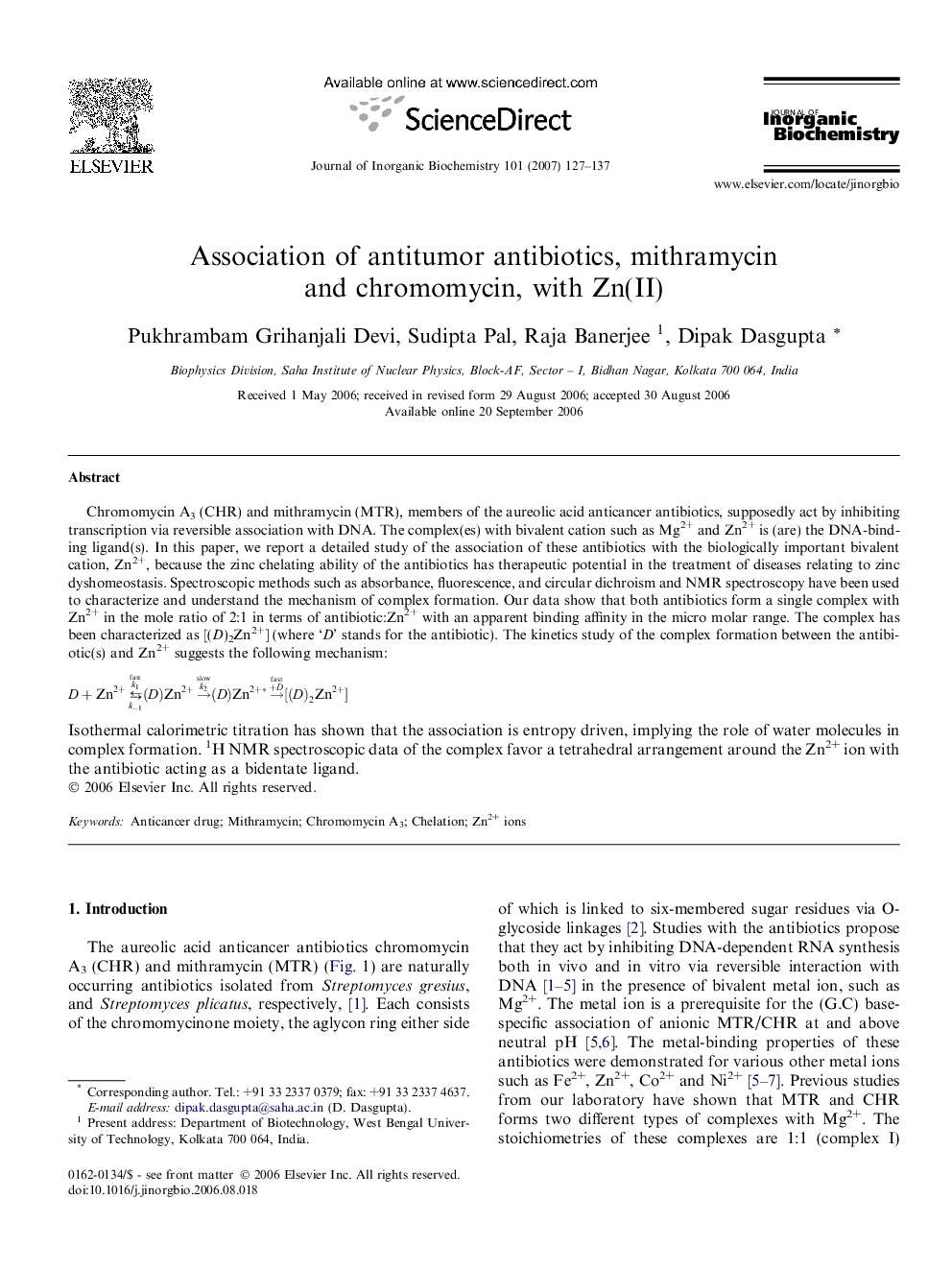| کد مقاله | کد نشریه | سال انتشار | مقاله انگلیسی | نسخه تمام متن |
|---|---|---|---|---|
| 1316548 | 976466 | 2007 | 11 صفحه PDF | دانلود رایگان |

Chromomycin A3 (CHR) and mithramycin (MTR), members of the aureolic acid anticancer antibiotics, supposedly act by inhibiting transcription via reversible association with DNA. The complex(es) with bivalent cation such as Mg2+ and Zn2+ is (are) the DNA-binding ligand(s). In this paper, we report a detailed study of the association of these antibiotics with the biologically important bivalent cation, Zn2+, because the zinc chelating ability of the antibiotics has therapeutic potential in the treatment of diseases relating to zinc dyshomeostasis. Spectroscopic methods such as absorbance, fluorescence, and circular dichroism and NMR spectroscopy have been used to characterize and understand the mechanism of complex formation. Our data show that both antibiotics form a single complex with Zn2+ in the mole ratio of 2:1 in terms of antibiotic:Zn2+ with an apparent binding affinity in the micro molar range. The complex has been characterized as [(D)2Zn2+] (where ‘D’ stands for the antibiotic). The kinetics study of the complex formation between the antibiotic(s) and Zn2+ suggests the following mechanism:D+Zn2+⇆k-1k1fast(D)Zn2+→k2slow(D)Zn2+*→+Dfast[(D)2Zn2+]Isothermal calorimetric titration has shown that the association is entropy driven, implying the role of water molecules in complex formation. 1H NMR spectroscopic data of the complex favor a tetrahedral arrangement around the Zn2+ ion with the antibiotic acting as a bidentate ligand.
Journal: Journal of Inorganic Biochemistry - Volume 101, Issue 1, January 2007, Pages 127–137